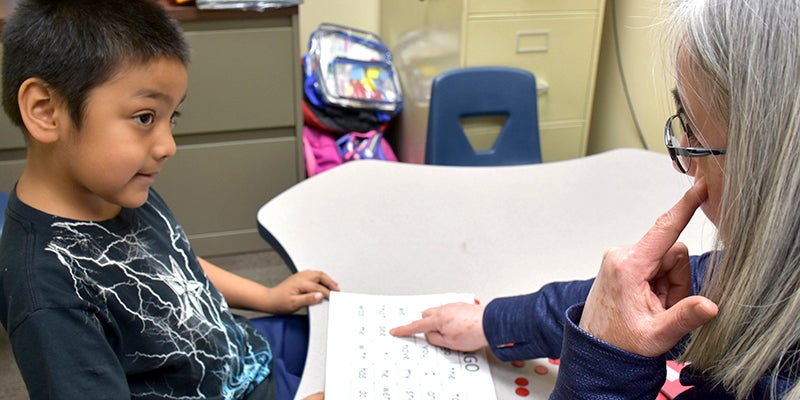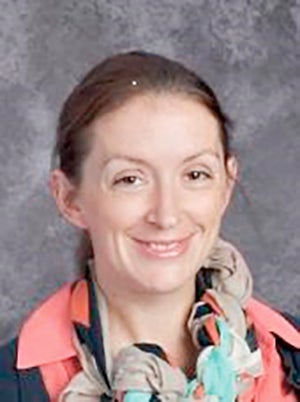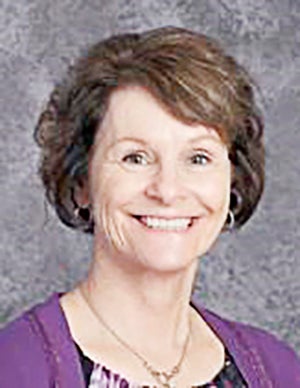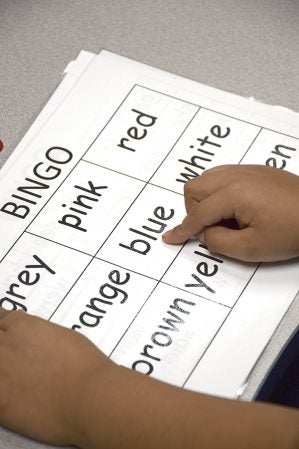Language to learn: Interpreters provide first steps to a new culture
Published 3:01 pm Sunday, April 16, 2017

- Five-year-old Oscar Ramirez-Rodriguez looks to success coach Laura Ramirez to figure out the word “see” during instruction at Woodson Kindergarten Center. Deb Nicklay/deb.nicklay@austindailyherald.com
Kristi Beckman said she loves living in a world rich in languages and new peoples.
The wealth of new faces in Austin Public Schools, where she is the integration coordinator, provides opportunities for a cultural awareness few schools are afforded.

Beckman
Still, trying to understand the languages — and having students understand English — is not without its challenges. The rising number of students without English language skills leaves the district looking for an adequate number of interpreters.
Learning the language is an important step for immigrant students and their families if they are to begin an effective integration process, said Beckman.
And, she said, making sure new students are understood by their English peers is equally important, not only to them, but their families as well.
“Having this kind of diversity, this many cultures, I think, is wonderful for the community” but not speaking English “can also be a big barrier for families trying to negotiate community resources,” said Beckman.
Finding common ground
You could call Beckman and EL Coordinator Lori Henry guardians who stand on the front lines of making sure each student gets the services they need. APS puts an admirable amount of resources to make that happen for a quickly changing student demographic, Beckman said.
A myriad of languages are spoken at the local schools — from Karenni, a regional group from Burma; to Nuer (south Sudan); add to that Karen, Chin, Burmese, French; and almost 1,000 students speak Spanish.
“In 2007, the majority of our families were Spanish-speaking,” Beckman said. “In 2017, we have 47 languages. Only three years ago we had zero students speaking Karenni.”
Today, there are almost 100.

Henry
“When I began (as EL coordinator) 10 years ago, we had 300 new EL students and eight teachers,” said Henry. Today, she has 23 teachers who provide EL instruction to 820 students.
Finding interpreters to help establish communication while students learn English has been a growing challenge, both agreed. Beckman and Henry are always on the look out for people who speak more than one language.
The district employs 12 success coaches whose jobs include interpreting, as well as guiding families through the intricacies of American culture, finding resources and meeting requirements.
It is not unusual, said Amy Baskin, of the Community Learning Center, to have a non-English speaking parent come into the offices and hand a staffer a cellphone that has an interpreter on the other end to help the parent apply for preschool services.
Having everyone on the same language page is extremely important at the preschool level, said Special Education Case Facilitator Pam Anfinson, who works at the CLC. If a student needs services — and, perhaps, special education services, as well — testing needs to be accomplished. Conducting the Bilingual Early Language Assessment, for instance, tries to determine not only knowledge of language, but its use altogether.
“We are always asking, ‘Is this just a difference in language or a language delay?’” said Anfinson.
There are 24 different languages spoken in the preschool, including regional languages that may not be immediately recognized.
One success coach, Mee Tee, said he can interpret in his native language of Korenni, but cannot understand Karen, even though the language is also found in their common country, Burma.
“However, if the other person can speak Burmese, which I also speak, then it’s good,” he said. Much of interpreting is finding common ground, he added.
New neighbors
In providing services that help new students succeed, “our district, I think, goes the extra mile,” said Henry, adding that empowering families is equally important. Families, in turn, become the support unit outside of school. It is not unusual, Henry said, for coaches to visit families in their homes to answer questions or resolve issues.
The draw to Austin is almost certainly connected with the meatpacking industry.
“We see some families coming directly to Austin from the Twin Cities due to the stable employment, the ability to purchase less expensive homes, and the small community. Many of the refugee population come from rural areas,” Beckman said.
Henry said the language abilities of new students come in a broad range. There might be refugee students who may have only rudimentary schooling, no schooling at all. They could be unaccompanied children, with no parents, who are staying with friends or extended family. Still others might be students who haven’t been in any school for five years, Henry said. Refugee students, many from Africa and Burma, have escaped their countries’ civil wars by coming to the U. S.
Success coaches serve as interpreters and support for the students and families. One speaks Karenni, two speak Arabic and another Anyuak. The others speak Spanish.
Beckman says there are days when there are simply not enough interpreters to go around.
Parent-teacher conferences are a good example, she added.
“Just imagine what that would be like; you know how those conferences are scheduled? If you only have one interpreter for 100 sessions — well, you can see the problem. It’s a physical impossibility to make all of them.”
Fortunately, she said, administrators have worked to move and arrange conference schedules so that interpreters can be available. Parent’s Portal on the school website is often helpful to parents who may not be able to speak the language effectively, but may be able to read some of the language. Administrators are just beginning to investigate use of devices that would allow one person to speak in one language that is interpreted in another language to another person. While far from being adopted, it might prove another way to help new students and their families communicate with their new neighbors.
A community approach
Establishing meaningful communication with families is as important as teaching their children, said Beckman. With language comes understanding; with understanding comes confidence to embrace a new culture.
“Working with families is almost as important” as working with the children, she added. In some instances, children almost become the parent and then there are control issues.
Flexibility, as well as a “what works” attitude seems to be more effective than a one-size-fits-all approach. Help might come from the Welcome Center in Austin, where staff can also help with interpretation, or from the Parenting Resource Center. In fact, its Executive Director Gema Alvarado Guerrero was a student who had to learn English when her family arrived in Austin. International students from Riverland Community College often provide help, too.
Beckman and Henry hope to have more families integrated into parent groups who, in turn, provide role modeling for other parents. If the circle of diverse parents in leadership roles widens, everybody wins, said Henry. However, she has found that different cultures have different comfort levels of participation.

Oscar Ramirez-Rodriguez, 5, points to the right color during Colors Bingo, an exercise in written English.
Deb Nicklay/deb.nicklay@austindailyherald.com
While daunting at times — 25 percent of kindergarten students need EL services, she said — Henry said she is proud of the way Austin schools have worked proactively to embrace their new neighbors, with the attitude that all students can learn — if they get the right tools and guidance.
“Austin schools are very innovative,” offering teachers a pathway to licensure when EL teachers were needed, Henry said. Tuition for the additional coursework is picked up by the district, but then repaid by having the teachers waive the additional dollars that come with lane changes on the salary schedule, until the tuition is paid.
Not all new students need language help, Beckman said.
“We have students from Ethiopia, Nigeria, for instance, who speak very good English,” said Beckman. Children of scientists who work at The Hormel Institute might also have a good grasp of the language.
In other words, painting the community’s diversity with a broad brush can be misleading.
And that’s just one lesson to be learned in this new population profile in Austin. Beckman said the school is beginning to experience the real wonder of new faces, new experiences.
“I see our students speaking with other students of different cultures all the time,” she said. “I know I learn something every day. I wouldn’t want to be, or have my children be, anywhere else. You can’t experience this in most of Minnesota.”
“I think Austin Public Schools have been welcoming, and we continue to try to find ways to really, truly integrate into positions to make decisions about their families; to live a happy life as our neighbors.”
Henry agreed.
“I love living in a diverse community; you have to challenge your way of thinking,” she said. “But living in this change has made me a better person. I think I am more sensitive to our differences, which I also appreciate.”
“We are slowly beginning to see our student life more integrated,” said Beckman, in athletics, arts, academics and advanced placement classes. The cultural richness of the school is an opportunity that cannot be overstated, she said.
That is not only reflective of hard work by the new students, their families and staff, but it also provides insight into the more accepting nature of Austin as a community.
“We want everyone engaged,” Beckman said. “And community is a large part of that.”
Top languages spoken at Austin
Public Schools:
English speaking: 3,611
Spanish: 980
Anyuak (south Sudan): 107
Karenni (From Kayah State, Burma): 92
Karen (From Karen State, Burma): 84
Nuer (south Sudan/southeastern Ethiopia): 57
Vietnamese: 30
Chinese: 22
Others: French, Amharic, Burmese, Arabic, Dinka, Lao, Malay, Oromo, Portugese, Sundanese, Tigrinya





